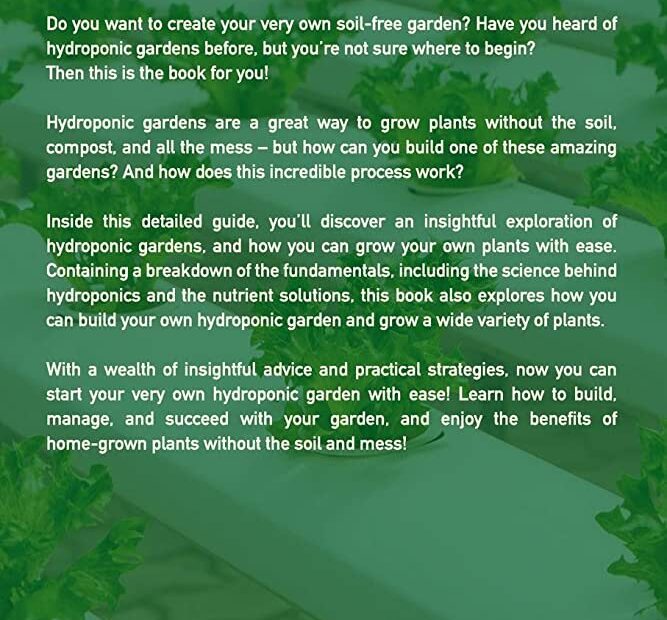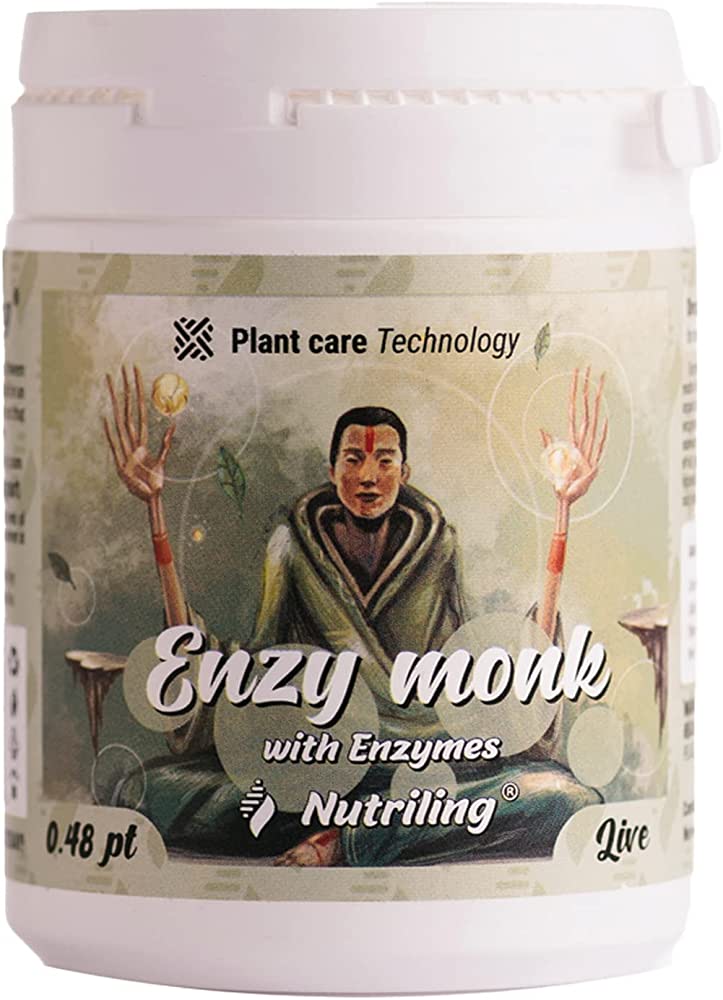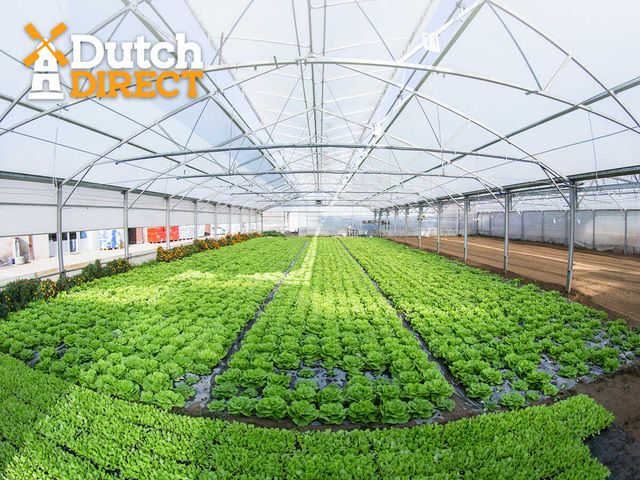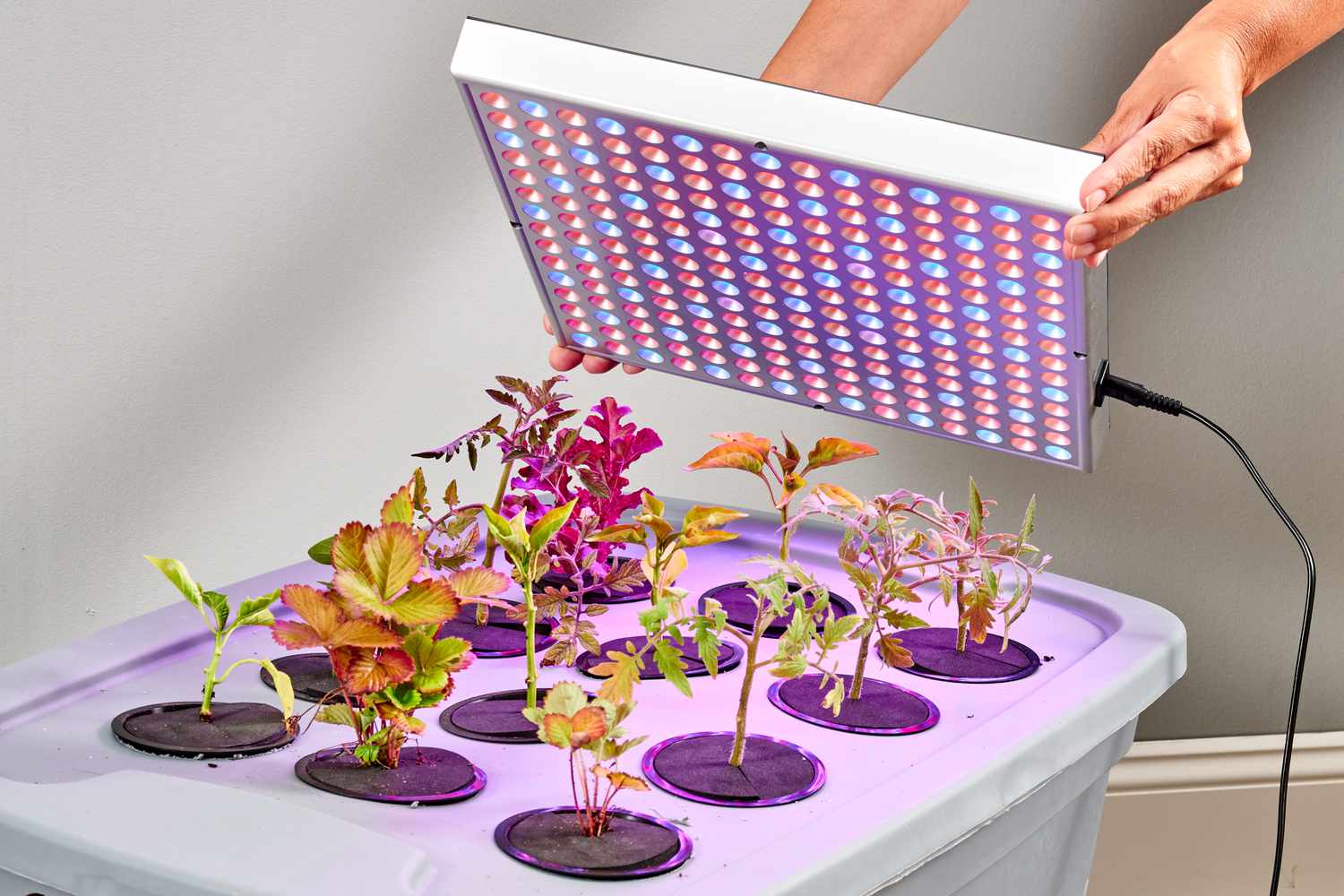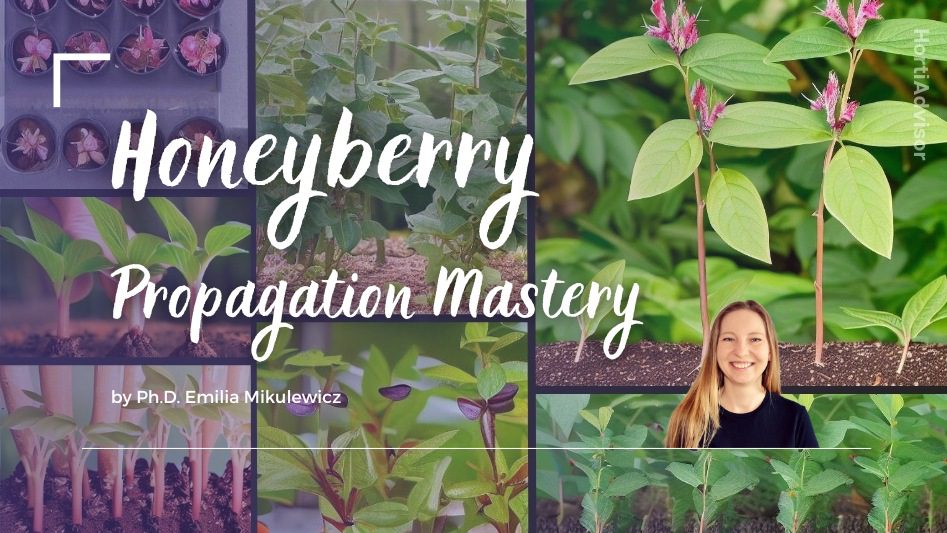Hydroponic gardening offers many benefits including faster growth, higher yields, and the ability to grow crops in limited space without the need for soil. As our world’s population grows, so does the demand for food production, creating an urgency to develop innovative ways to maximize crop yields while minimizing the use of water and land.
Hydroponic gardening is a modern alternative to traditional soil-based agriculture that offers many distinct advantages. From a faster growth rate to producing higher quality crops, this system of farming has become a popular choice for gardeners and commercial growers alike.
The soilless techniques used in hydroponics also mean that harmful chemicals and pesticides can be avoided, making it an environmentally sustainable practice. With the ability to grow crops year-round in a controlled environment, hydroponic gardening is proving to be not just innovative but also economically and ecologically savvy.
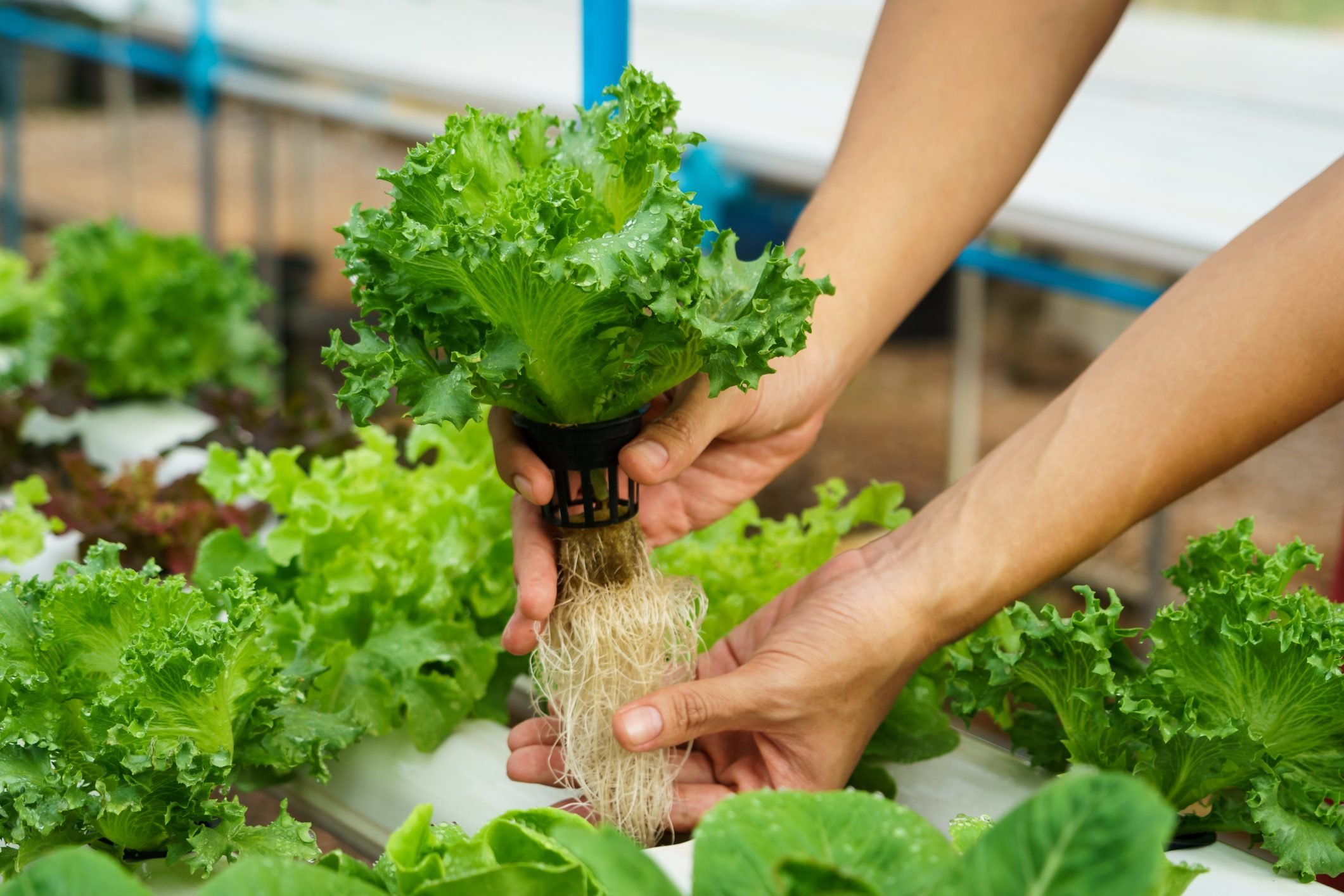
Credit: www.rd.com
How Hydroponic Gardening Works
Hydroponic gardening is becoming increasingly popular as more people become interested in producing their own food in an efficient and sustainable way. In this section, we will explain the process of hydroponic gardening and compare it with traditional soil gardening methods.
Explain The Process Of Hydroponic Gardening
Hydroponic gardening is a method of growing plants without soil. Instead, the plants are grown in a nutrient-rich solution that is delivered to their roots through a growing medium. Here are the key points about how it works:
- Plants are grown in containers, such as trays or buckets, filled with a growing medium such as perlite, sand, or rockwool.
- The growing medium anchors the plant and provides it with support.
- The plant’s roots are submerged in a nutrient-rich solution that is circulated to the growing medium.
- The solution is delivered through a pump and tubing system that ensures the plants receive the right amount of nutrients and water.
- The nutrient solution is adjusted to meet the specific needs of each plant, ensuring the optimal growth rate and crop yield.
Hydroponic gardening has several benefits over traditional soil gardening methods.
Compare And Contrast With Traditional Soil Gardening Methods
Benefits Of Hydroponic Gardening
- No soil is needed, which means no weeding or tilling of land is necessary.
- Plants receive nutrients directly from the solution, which means less water is needed for irrigation.
- The nutrient solution can be formulated to meet the specific needs of each plant, which means optimal growth rates and crop yields.
- The controlled environment of hydroponic systems means plants are protected from pests, diseases, and extreme weather conditions.
Benefits Of Traditional Soil Gardening Methods
- Soil gardening allows for natural and diverse ecosystems to develop, including beneficial insects and microorganisms that contribute to the health of the garden.
- Traditional soil gardening is more familiar to most people and requires less specialized equipment.
- Soil gardening can be more affordable since hydroponic systems require pumps, tubing, and trays or buckets.
Hydroponic gardening is an innovative method of growing plants that offers several benefits over traditional soil gardening methods. While hydroponic systems require more specialized equipment and are more expensive, the benefits of higher crop yields and a controlled growing environment make them an attractive option for anyone interested in producing their own food.
Benefits Of Hydroponic Gardening
Hydroponic gardening is a method of growing plants without soil. This innovative process is quickly gaining popularity due to its numerous benefits. As a sustainable and efficient gardening method, hydroponic gardening is perfect for both home gardeners and commercial farming.
Below are some of the key benefits of hydroponic gardening.
Increased Yields And Faster Growth Rates
Hydroponic gardening produces faster yield than traditional soil gardening. This is because hydroponic plants absorb nutrients quickly and are not required to search for food, which means they focus more on growing big and healthy. As a result, with hydroponic gardening, you can expect to harvest crops up to 25% faster than soil-based gardening.
Hydroponics also allows you to grow more plants per square foot, making it a more efficient use of space.
• Reduced Water Usage And Environmental Impact
Hydroponic gardening uses less water than soil-based gardening due to its recirculating capabilities. With recirculation, water loss through evaporation is minimized, and the plants get to use the water more efficiently. Additionally, hydroponics can reduce environmental impact. By growing plants in a controlled environment, you do not need chemical fertilizers or pesticides, decreasing environmental pollution.
• Ability To Grow In Limited Space Or Non-Traditional Environments
Hydroponic gardening allows you to grow plants in limited spaces such as balconies, indoors, or in urban settings, where traditional soil-based gardening would be impossible. With hydroponic gardening, you can grow plants even in harsh conditions. For example, by controlling the environment with temperature, humidity and ph, you can grow plants in a hydroponic system throughout the year.
• Consistency And Control Of Nutrient Levels And Ph
In traditional soil gardening, it is almost impossible to control the nutrient levels and ph levels of the soil. Nevertheless, hydroponic plants are grown in a controlled environment where nutrient levels and ph levels can be controlled. As such, hydroponic gardening allows you to produce consistent yields and maintain high-quality produce.
You have the ability to manage the nutritional value of the plants by providing them with the right nutrients they need at the right time.
Hydroponic gardening is an efficient, sustainable, and cost-effective method of gardening. With the above benefits, it is no wonder that it is quickly becoming a favorite among gardeners worldwide.
Getting Started With Hydroponic Gardening
Have you been considering starting a hydroponic garden but don’t know where to begin? In this section, we’ll cover the basics of necessary equipment and supplies, choosing the right plants, setting up a hydroponic system at home, and maintenance and troubleshooting tips.
Overview Of Necessary Equipment And Supplies
Before starting your hydroponic garden, it’s important to gather the necessary equipment and supplies to ensure success. Here are some important items to include:
- A container for holding nutrient solution (can be purchased or diy using a plastic storage bin or similar)
- A grow tray
- A pump for circulating the nutrient solution
- Growing media (rockwool, peat moss, clay pellets, etc.)
- Nutrient solution
- Ph and ec meters for monitoring and adjusting the solution levels
- A timer for controlling the pump’s on/off cycles
- Adequate lighting for plant growth
Choosing The Right Plants For Hydroponic Growing
Not all plants are suitable for hydroponic growing. When selecting plants for your hydroponic garden, consider the following factors:
- Size: Choose plants that will fit in your grow tray and won’t outgrow your set up.
- Water requirements: Some plants are more water-intensive than others and may require more frequent watering in a hydroponic system.
- Nutrient needs: Different plants have different nutrient requirements. Research the ideal nutrient levels for your chosen plants.
- Ph tolerance: Some plants are more ph-sensitive than others. Make sure the ph of your nutrient solution is within the ideal range for your plants.
Some great crops for hydroponic growing include lettuce, spinach, herbs, and tomatoes.
Setting Up A Hydroponic System At Home
The process of setting up a hydroponic system can seem overwhelming, but with the right materials and instructions, it’s quite simple. Follow these basic steps to set up your hydroponic garden at home:
- Assemble your equipment and supplies.
- Prepare your growing media (if necessary) and rinse thoroughly.
- Determine the ideal nutrient solution levels for your plants and mix accordingly.
- Fill your container with the nutrient solution.
- Place your grow tray on top of the container.
- Plant your chosen crops in the grow tray using your chosen growing media.
- Attach your pump and timer, ensuring the solution circulates through your plants regularly.
- Adjust the ph and nutrient levels as needed.
- Provide adequate lighting for plant growth.
Maintenance And Troubleshooting Tips
Hydroponic gardening requires regular maintenance to prevent issues and ensure successful crop growth. Some important tips to keep in mind include:
- Monitor ph and nutrient levels regularly and adjust as needed.
- Check your pump and timer to ensure they’re functioning correctly.
- Keep your growing media damp but not waterlogged.
- Keep your lighting consistent and at the appropriate distance from your plants.
- Monitor your plants for any signs of pests or disease.
In the case of problems, such as wilting or nutrient deficiencies, there are several troubleshooting steps you can take. Conduct research on potential issues and their solutions or reach out to a hydroponic gardening community for advice.
Equipment And Supplies
Hydroponic gardening shares similarities with traditional soil-based gardening. However, hydroponic gardening eliminates the need for soil and instead uses nutrient-rich water. The approach has many benefits, including saving water, space and fertilizer. This article is part of the series about the benefits of hydroponic gardening, and in this section, we will examine the necessary equipment and supplies required for successful hydroponic gardening.
List And Briefly Describe The Necessary Equipment And Supplies For Hydroponic Gardening
Hydroponic gardening requires equipment and supplies that may not be familiar to everyone. Here are some of the essential ones:
- Grow lights: Grow lights like cree cob led grow lights or kingbo dual optical lens-series leds are an essential requirement for hydroponic gardening. These lamps provide light that replaces sunlight, which is not available indoors.
- Hydroponic system: Different types of hydroponic systems are available for various growing applications. Ebb and flow systems, also known as flood and drain systems, are ideal for growing in trays or pots.
- Growing medium: Grow medium provides support for the roots and space to allow the uptake of water and nutrients. Examples of growing mediums available include rockwool, coco coir, perlite, or a mixture of these.
- Nutrient solution: Nutrient solution provides the plants with macronutrients and micronutrients needed for growth. There are many nutrient solutions from different brands, including advanced nutrients, general hydroponics, and botanicare.
- Ph balancer: Ph balancer is necessary to maintain the correct ph level of the water and nutrient solution. For example, general hydroponics ph control kit offers accurate measurement of ph and helps you maintain it easily.
- Water pump: Hydroponic systems require constant motion of the nutrient solution around the roots. So water pumps like active aqua submersible water pump are necessary to move the nutrient-rich water around the roots.
- Air pump and stone: For the oxygen flow in hydroponic systems, air pumps and stones like hydrofarm active aqua air pump or vivosun air stone are necessary. It helps maintain plant health and growth rates.
Hydroponic gardening requires specific equipment and supplies. Beginners may easily feel unsure about what they need, but this article gives a general overview of the essential items required. With the correct equipment and supplies, hydroponic gardening can be a rewarding and enjoyable activity for everyone.
Choosing The Right Plants
Hydroponic gardening has become increasingly popular among home gardeners due to its numerous benefits, including reduced water consumption and fewer pest problems. One crucial factor in hydroponic gardening success is choosing the right plants to grow. In this section, we will discuss the most common plants grown using hydroponic methods, explain why certain plants work well, and share tips for selecting plants based on space, light, and nutrient requirements.
Most Common Plants Grown Using Hydroponic Methods
While almost any plant can be grown hydroponically, some are better suited than others. Here are some of the most common plants grown using hydroponic methods:
- Lettuce: This is the most popular plant grown in hydroponic systems due to its fast growth and shallow roots.
- Herbs: Herbs such as basil, parsley, and cilantro thrive in hydroponic gardens as they require less space and are easy to maintain.
- Tomatoes: This is a popular fruit in hydroponic gardening. It requires a lot of space but produces well under hydroponic conditions.
- Strawberries: These plants are also suitable for hydroponic gardening as they grow quickly and produce fruit all year round.
Why Certain Plants Work Well And Others Do Not
The reason why certain plants work well in hydroponic gardens is that they require less soil to grow. As soil is not necessary for hydroponic gardening, plants with shallow roots do exceptionally well in hydroponic systems. Additionally, vegetables and fruits that have a small root to shoot ratio are ideal for hydroponic gardening as they don’t need much space to grow.
Tips For Selecting Plants Based On Space, Light, And Nutrient Requirements
- For small spaces, choose plants that are compact and do not require much space to grow, such as herbs and lettuce.
- Select plants that have similar nutrient and light requirements for easier management.
- Choose plants based on the amount of light available in the growing area. For instance, tomatoes require more light than lettuce, so they should be planted in a location with plenty of light.
- Use high-quality nutrient solution to ensure optimal growth and prevent nutrient deficiencies.
Choosing the right plants is an important aspect of hydroponic gardening success. By following these tips, you can select plants that will thrive in your hydroponic system, allowing you to enjoy fresh and healthy produce all year round.
Setting Up A Hydroponic System
If you’re considering growing plants hydroponically, setting up a basic hydroponic system can be a good start. Hydroponics offers many benefits when it comes to environmental impact, plant growth, and even saving space. In this section, we’ll provide you with step-by-step instructions for setting up a basic hydroponic system at home.
Choose The Right Location For Your Hydroponic System
Before setting up your hydroponic system, make sure to choose the appropriate location. Remember, you will need a place with plenty of light and access to water and electricity. Also, ensure the location is well-ventilated as hydroponics can produce extra humidity, which may cause mold or mildew growth.
Create The Hydroponic System’S Structure
Once you’ve chosen the right location, then you need to create your hydroponic system’s structure. Depending on your preference, materials, and plant choice, you can choose from several different types of hydroponic systems. Some of the most popular hydroponic systems are deep water culture, nutrient film technique, drip system, and ebb-and-flow.
Add Necessary Equipment
To set up your hydroponic system, you will need some essential equipment that includes:
- A water pump: This will circulate the nutrient solution throughout the system.
- A reservoir: This is where the nutrient solution is stored.
- Grow lights: This will provide the necessary light to your plants if your system is indoors.
- Net pots or baskets: These are used to hold your plants.
- Growing medium: This is required to provide support to your plants and growth, such as coconut coir, rockwool, perlite, and vermiculite.
Mix The Nutrient Solution
The most critical part of setting up your hydroponic system is mixing the nutrient solution. You’ll need to follow instructions carefully, ensuring that you’re using the appropriate mix of nutrients that your plant requires.
Plant Your Crops
Once your hydroponic system is set up, and your nutrient solution is mixed, it’s time to plant your crops using the net pots or baskets. Take extra care not to damage the root systems of your plants during the planting process.
Make sure to maintain the appropriate ph and keep the nutrient levels in the right range throughout the growing process. Check the water levels daily to ensure your plants are getting the right amount of water.
Setting up a basic hydroponic system at home is not difficult, and it can be an excellent way to grow plants without soil. It saves space, helps to reduce waste, and creates an eco-friendly environment. By following these simple steps, you can set up an efficient hydroponic system and grow your own fresh produce right at home.
Maintenance And Troubleshooting
Hydroponic gardening is becoming increasingly popular among individuals who are passionate about growing their own fruits, vegetables, or herbs. The practice involves growing healthy plants without soil, using a nutrient-rich solution instead. Hydroponic gardening offers several benefits, including saving time and space while producing healthy and nutritious plants.
We’ll explore the importance of maintenance and troubleshooting when it comes to hydroponic gardening.
Tips For Maintaining Healthy Plants And Proper Nutrient Levels
Maintaining healthy plants in a hydroponic system requires attention to certain details. Here are some tips to help you maintain healthy plants and proper nutrient levels:
- Test your water regularly: To ensure your plants are receiving the right nutrients, test your water regularly. You can use a water test kit to measure the ph and nutrient levels.
- Clean your system regularly: Cleaning your hydroponic system regularly prevents the buildup of mineral and salt deposits, which can harm your plants and clog the system.
- Monitor temperature and humidity: The ideal temperature for hydroponic gardening is between 72-80°f, and the humidity should be kept between 40-60%.
- Use appropriate lighting: Choose the right type of lighting for your plants and make sure they receive between 12 and 16 hours of light per day.
Common Issues And How To Troubleshoot Them
While hydroponic gardening is relatively simple, problems can arise from time to time. Here are some common issues that you may encounter and how to troubleshoot them:
- Nutrient deficiencies: Yellowing leaves or stunted growth are signs of nutrient deficiencies. Check your nutrient solution levels and adjust accordingly.
- Algae growth: Algae growth in your hydroponic system can be harmful to your plants. Keep your system clean and invest in light-blocking covers to prevent the growth of algae.
- Ph imbalance: Ph imbalance can affect your plants’ nutrient uptake. Test your water regularly and adjust the solution’s ph levels accordingly.
- Pests: Pests such as aphids and spider mites can be harmful to your plants. Use organic pest control methods or invest in insecticidal soaps.
Maintaining a hydroponic garden requires attention to detail, just like any other form of gardening. Following these tips and troubleshooting solutions can help you to maintain healthy plants and harvest a plentiful crop. Don’t let issues discourage you from continuing your hydroponic gardening journey – remember that perseverance pays off in the long run.
Frequently Asked Questions For Benefits Of Hydroponic Gardening
What Is Hydroponic Gardening?
Hydroponic gardening is a method of growing plants without soil, using nutrient-rich water.
What Are The Benefits Of Hydroponic Gardening?
Hydroponic gardening offers several benefits, including higher yields, faster growth, and more control over plant growth.
What Kinds Of Plants Can Be Grown Hydroponically?
Virtually any plant can be grown hydroponically, including fruits, vegetables, herbs, and even flowers.
Is Hydroponic Gardening Expensive?
While initial set-up costs can be higher, hydroponic gardening can be cost-effective in the long run, with lower water usage and higher output.
Are Hydroponic Gardens Difficult To Maintain?
Hydroponic gardens require some maintenance, but they are typically easier to maintain than traditional gardens and can be automated for convenience.
Can Hydroponic Gardening Be Done Indoors?
Yes, hydroponic gardening is ideal for indoor gardening since it requires less space and no soil. It’s great for small apartments, decks, and other small spaces.
Conclusion
Hydroponic gardening is an ideal solution for gardening enthusiasts who face limitations due to space, weather, or soil condition. This method of cultivation offers various benefits like higher yields, eco-friendliness, and optimal usage of resources. Additionally, hydroponics gardening provides an effective way to bring fresh produce to areas with food insecurity or limited infrastructure for traditional farming.
With constant advancements in technology and growing techniques, hydroponics gardening is becoming more widely accessible and affordable, allowing novice gardeners to adopt it with ease. Moreover, the use of hydroponics is a sustainable option that advocates for a healthier environment without compromising the quality of the produce.
Although some may be hesitant to dip their toes into this unconventional way of gardening, hydroponic gardening promises to provide a fruitful and exciting experience to anyone willing to give it a try.
- Why Ease of Use is Crucial in Trucking Dispatch Software - September 22, 2024
- Better Communication With Dispatchers: How Trucking Dispatch Software Can Optimize Operations - September 7, 2024
- Maximizing Efficiency: The Importance of Accurate Location Tracking for Trucking Operations - August 23, 2024
